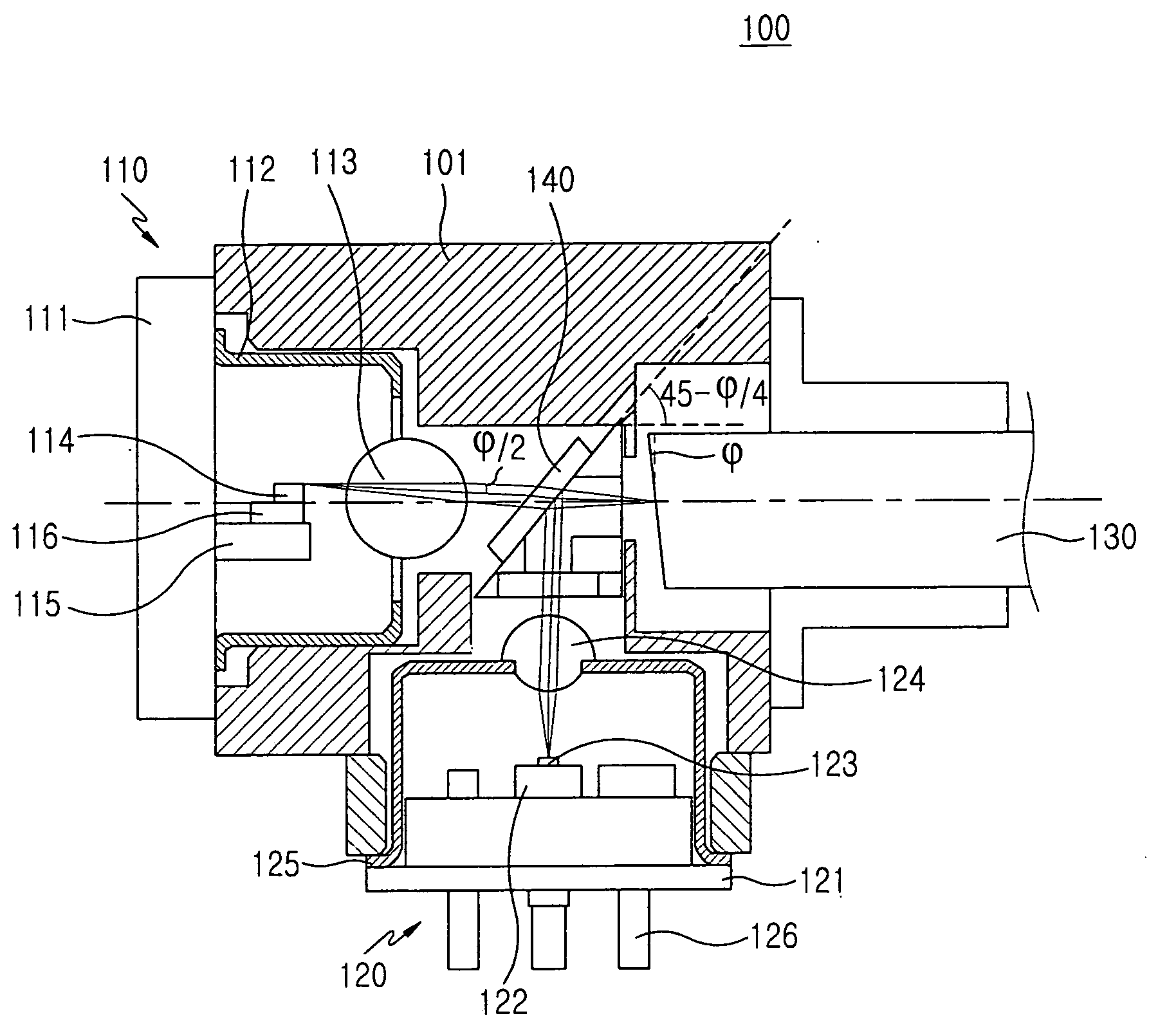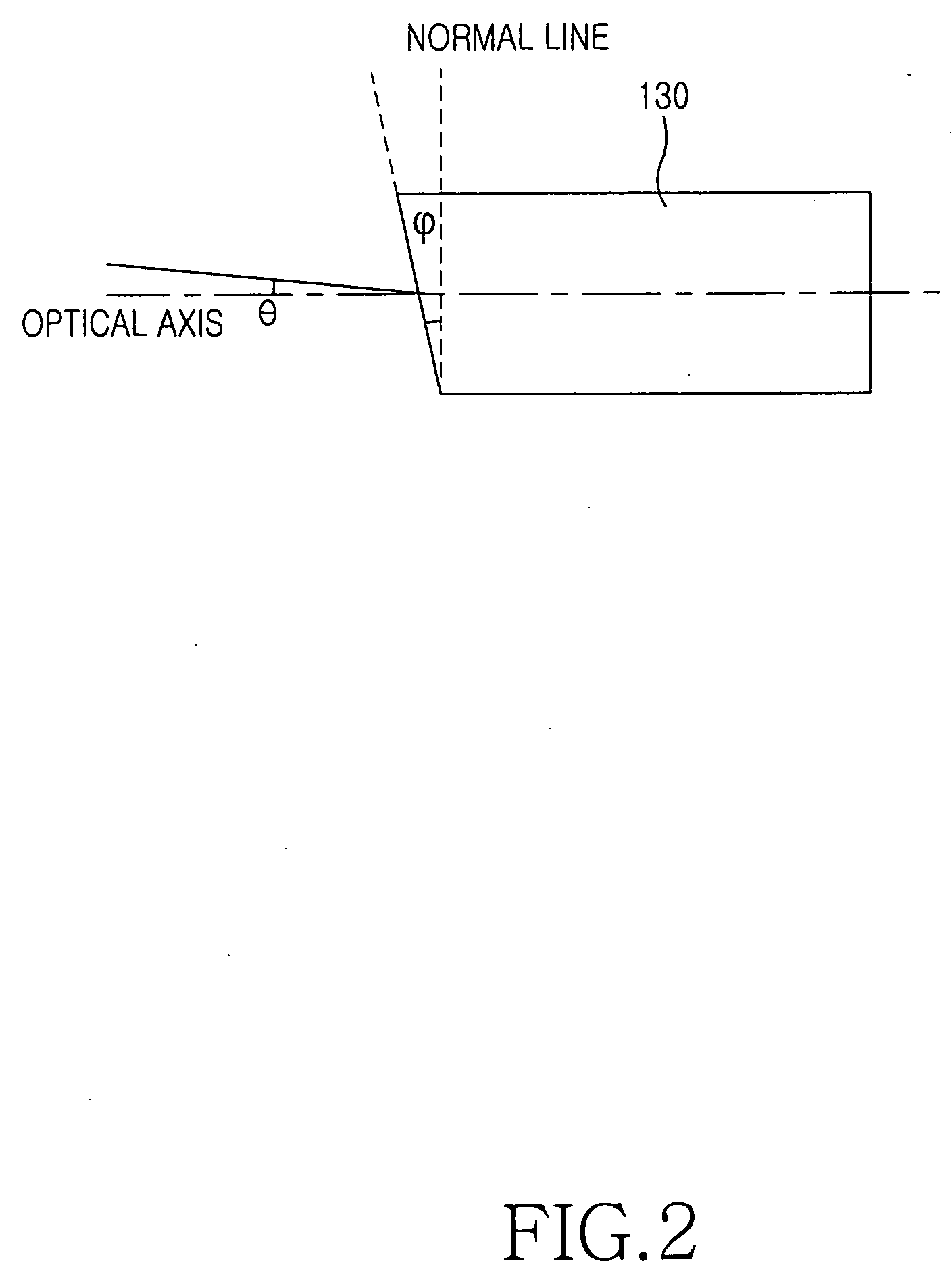Bidirectional optical transceiver
- Summary
- Abstract
- Description
- Claims
- Application Information
AI Technical Summary
Benefits of technology
Problems solved by technology
Method used
Image
Examples
Embodiment Construction
[0023] An embodiment of the present invention will now be described in detail with reference to the annexed drawings. For the purposes of clarity and simplicity, a detailed description of known functions and configurations incorporated herein has been omitted for conciseness.
[0024]FIG. 1 illustrates a bidirectional optical transceiver 100 according to an embodiment of the present invention. As shown, the bidirectional optical transceiver 100 includes a wavelength-selecting filter 140 for separating the traveling paths of a first optical signal and a second optical signal, a transmitting module 110 for generating the first optical signal, a receiving module 120 for detecting the second optical signal, and an optical fiber 130 for inputting and outputting the first optical signal and the second optical signal. Note that the transmitting module 110 and the receiving module 120 have TO-CAN structures.
[0025] The optical fiber 130 includes a face that is opposite to the wavelength-selec...
PUM
 Login to View More
Login to View More Abstract
Description
Claims
Application Information
 Login to View More
Login to View More - R&D
- Intellectual Property
- Life Sciences
- Materials
- Tech Scout
- Unparalleled Data Quality
- Higher Quality Content
- 60% Fewer Hallucinations
Browse by: Latest US Patents, China's latest patents, Technical Efficacy Thesaurus, Application Domain, Technology Topic, Popular Technical Reports.
© 2025 PatSnap. All rights reserved.Legal|Privacy policy|Modern Slavery Act Transparency Statement|Sitemap|About US| Contact US: help@patsnap.com



